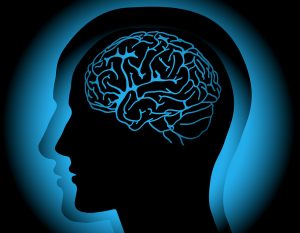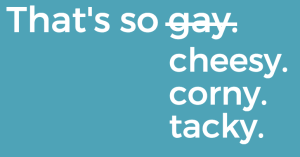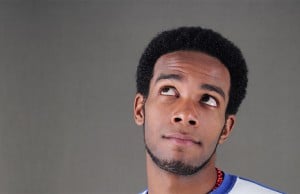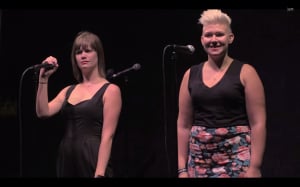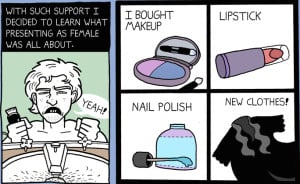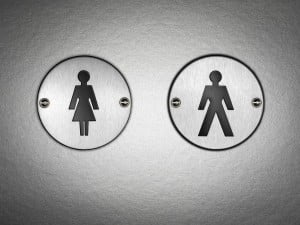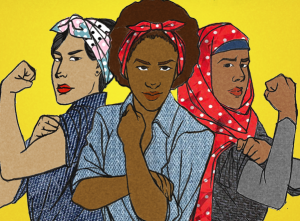Throughout my childhood, adolescence, and even my late teens, the threat of being “taken away” hung over my head like a guillotine.
I don’t mean like Liam Neeson “taken.” I mean a specific kind of isolation that can only be used as a threat against people like me.
I mean being taken to an asylum.
I am autistic, bipolar, OCD, and suffer from generalized anxiety and chronic insomnia. All of these things combined made me a very volatile child.
To a child, depression, anxiety, mania, and involuntary compulsions are confusing and frustrating. You have no language to describe what you’re going through, and you have no idea whether other people experience the world in the way you experience it.
And since most people don’t experience the world in the way you experience, the adults in your life don’t usually know how to handle the way you express these painful, confusing, and frustrating things going on in your brain.
This lack of information for parents with neurodivergent and mentally disabled children results in buckets of ableism and abuse.
And one of the ways that this ableist parenting manifests itself is using the threat of being sent to the hospital as a way to gain control.
For example, when I was little, around ten, I would have severe manic outbursts.
These outbursts were a result of being depressed and confused with the world I had to live in that was clearly not made for people who function the way I do. These outbursts were violent, they were loud, and sometimes they were in public.
One of the only ways my parents knew to rein me in when I was getting out of their control was to tell me that if I didn’t stop, I would be “taken away.” These threats accompanied statements like “You’ll never see us again” and “You’ll never be outside again.”
Now, I am one of the lucky ones. These threats remained threats. And the closest I ever got to seeing the inside of a hospital like that was through horror movies.
So, it’s not surprising that the depictions I saw in horror films of mentally disabled folks and the places they were imprisoned left a very, very bad taste in my mouth.
This is because the scare tropes used in these types of horror movies don’t end when the credit start rolling.
These depictions of mental hospitals and the patients within them contribute to the very real, very scary treatment of mentally disabled and neurodivergent people today.
And here’s how:
1. The Systemic Abuse of Disabled People Isn’t a Thing of the Past
One of the many types of asylum horror out there is the 1960’s asylum trope.
This is most obvious within modern US media in the second season of American Horror Story, and it leans heavily on “outdated” practices like electroshock therapy and lobotomies for the scare factor.
It’s scary because it’s inhumane. It’s scary because we look back at these doctors like real life monsters, delving into the horrors of our collective past.
We also see this play out in the “Let’s romp around an abandoned mental hospital for funsies” trope.
The scare factor here are the ghosts, the residual fear and pain of the patients left in the past, forever wondering the halls of their prisons, here to frighten the pants off of some 21st century thrillseekers.
The problem here is what both of these tropes rely on for their horror: the past.
These tropes rely on a collective acceptance that these horrors are a thing of the past – and what they do is reinforce this acceptance, making it harder and harder for survivors of these present-day horrors to be taken seriously.
Now, while I agree that the state of mental healthcare is not the same as it was fifty years ago (and that sites of past trauma are frightening and probably haunted), it’s just not true to think that there is nothing abusive and terrifying about the current treatment of mentally disabled and neurodivergent folks.
One only needs to take a look at the countless numbers of disabled and neurodivergent children that are emotionally and physically abused in their homes to see that we do not live in a society that protects and values the lives of disabled people.
The abuse that goes on inside of residential homes and schools for neurodivergent and disabled folks is so bad that the UN has actually deemed these practices torture.
But it’s not only in these settings that these atrocities are inflicted upon neurodivergent and disabled people.
In fact, shock therapy, a hot item in the asylum trope, is still being used today in the US for “treatments” for autism and mental illness.
So when I see a woman strapped to a bed being electrocuted, I don’t see a grim reminder of the past.
I see a potential part of my future.
2. It Depicts Mentally Disabled People as Violent, Child-Like, Or Unreliable
The asylum in these movies would be nothing without the hearty group of Hollywood extras paid to sit in the back and “act cr*zy.”
In fact, the aforementioned federally-funded human torture is only half of the scare factor in most asylum movies. The other half is the patients.
In these films, this rag-tag bunch of Hollywood “psychotics” consists of a couple of different types, all equally as offensive.
First is the violent patient. This is the “Miggs” of the group.
For those who don’t know, Miggs is a character in Silence of the Lambs whose brief on-screen moment is him cursing at a young Jodie Foster and then throwing semen in her face.
This is the character that is replicated in so many haunted houses; they’re the character who is defined by their padded cell and violent behavior.
This character is used to scare the audience by making the protagonist (and by extension, the viewer) feel like they may be attacked at any moment by this violently unstable human being.
They’re just as terrifying as the ice pick lobotomy in this asylum – nothing more than a bloody fixture inside this house of horrors.
This trope is especially harmful because it perpetuates the idea that mentally disabled and neurodivergent people are usually the perpetrators of violence, when, in reality, we are far more likely to be the survivors of violence than the enactors of it.
The second trope we find here is the child-like neurodivergent, the foil to the violent “psychotic.”
These characters are typically “harmless” and possibly sedated – and sometimes, they even cut through the mood with some comedic relief centered around how child-like this adult is. They’re the ones sitting on the floor with some raggedy looking doll, speaking in whatever weird baby voice the actor decided to adopt for this riveting role.
The real life damage of this trope is the continued infantilization of disabled and divergent adults.
This infatilization leads to the public seeing neurodivergent and disabled folks as less-than, inherently unintelligent, and asexual (which is damaging even to asexual disabled folks like myself).
This infantilization only adds to the mistreatment of disabled folks, especially once we reach adulthood.
The third and final trope I will address here is the unreliable patient.
This is the patient who instills fear through manipulation. Is he telling you the truth? Is she just trying to manipulate you into loosing your sanity? Can any of these people even be trusted?
This trope is particularly enraging to me as a neurodivergent victim of gaslighting. This iteration of mental disability and divergence only adds to the type of thinking that leads to able-minded folks denying our lived experiences, pains, and sufferings.
But in horror films, these are the background characters – and whatever happens to them is fine as long as our protagonist escapes.
3. There Is No Sympathy for Those Put in Asylums (Except for the Able-Minded)
One of the biggest asylum tropes is that of the “totally not cr*zy protagonist who is sent to an asylum.”
Now, I recognize that, historically, able-minded folks have been sent to asylums. Asylums were used as a site of transphobia, homophobia, racism, and sexism, just as much as they were used as a cite of ableism.
The problem here is that we’re taught to sympathize with these able-minded victims – and not to sympathize with those who are neurodivergent and disabled (and especially not when there are intersections of sexism, racism, homophobia, transphobia, and ableism).
This horror trope relies on the fact that there are some people who are “supposed to be here” – that a lesbian in a mental hospital doesn’t make sense, but that—oh wait—if she’s bipolar, too, then yeah, leave her there.
A major part of the scare factor of the “able-minded person in a mental hospital” trope is that they’re trapped in a prison with a bunch of disabled people.
This mindset allows audiences to watch something like American Horror Story: Asylum and feel bad for the lesbian who is being tortured, but think not for a second on the other patients who are being put through the same process because they’re divergent or disabled.
This lack of sympathy is the very reason why hospitals in the 21st century are able to continue to use shock therapy without anyone caring.
Because it is no longer socially acceptable, by most standards, to throw LGBTQIA+ folks or particularly strong-willed women in mental hospitals, most people believe that there is nothing more to reform in the field of mental health care.
Mental healthcare reform became a game of trying to get as many groups of able-minded people out of the system as possible (which is a good thing), at the price of leaving behind the divergent and disabled (which isn’t).
***
When I see horror movies centered on asylums, I’m filled with a fear that goes beyond the jump scares and psychological torment of the movie itself.
What I see is the very real torture and abuse of people like myself.
When I see shock therapy, isolation rooms, IV sedation, I don’t see it as a grim reminder of our collective past. Instead, I hear the very real threats of my parents; I hear the voices of police officers ready to drag me away from my family.
I see my community and myself tortured and abused and forgotten.
So, do not let us be forgotten. Look to become as sympathetic for the disabled and divergent as you are for the able-minded and become aware when the media you consume desensitizes you to the abuse of people like myself.
[do_widget id=’text-101′]
Kris Nelson is a writer who runs a blog full of short queer-centric radical prose and a YouTube channel called The Whispering Witch, focused on uplifting guided meditations and relaxation videos. Kris also runs an online store by the name of SpellBoundTreasures, where they strive to bring magic into the world through crystal jewelry and herbal remedies. They can be contacted on Tumblr or at [email protected].
Search our 3000+ articles!
Read our articles about:
Our online racial justice training
Used by hundreds of universities, non-profits, and businesses.
Click to learn more
Most Read Articles
- « Previous
- 1
- …
- 30
- 31
- 32








